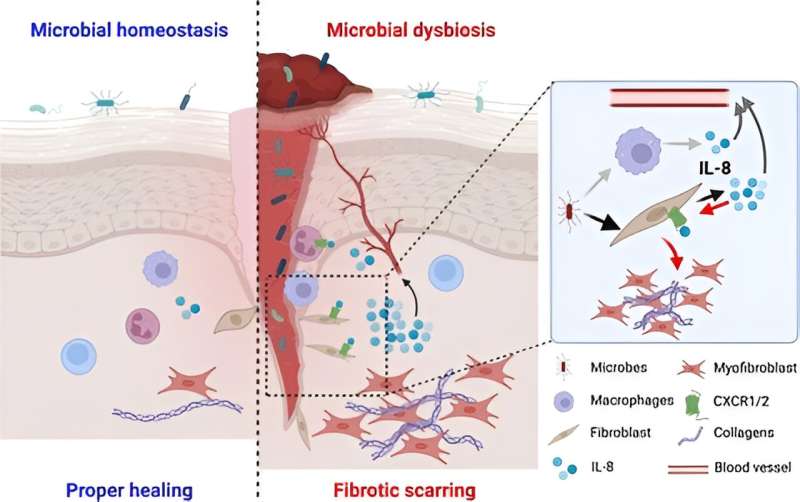This article has been reviewed according to Science X's editorial process and policies. Editors have highlighted the following attributes while ensuring the content's credibility:
fact-checked
peer-reviewed publication
proofread
Research provides insights into the pathology of keloid disease

A study in PNAS Nexus explores the microbiome of keloids, which are treatment-resistant raised scars.
Some wounds heal completely; some wounds leave a scar; and some wounds leave a noticeable raised and growing bump larger than the original wound, called a keloid. These keloids can itch and cause psychological distress. They are caused by hyperproliferation of cells called fibroblasts that produce collagen.
Previous research had suggested that microbiota might be one of many factors influencing fibroblast production.
Rui Chen, Tomasz Maj and colleagues looked for bacteria in clinical samples of keloid tissue and found higher concentrations of bacteria and different types of bacteria than are found in normal skin, especially in deep layers of the keloid.
In follow-up studies on patients, the authors found that while surface communities are largely similar between keloid skin and normal skin, bacterial communities in deeper skin layers were more diverse in keloids. Some of the bacteria found in keloids are known to cause inflammation.
The authors show that keloid-specific bacteria increase the production of the pro-inflammatory cytokine interleukin-8, which in turn promotes the migration of fibroblasts and the production of collagen—although this effect is not as strong as the authors initially predicted.
The authors propose that keloids represent a dysfunction in the normal wound healing sequence, in which fibroblast cells continue to create inflammation and migrate to the wound long after a normal healing process would have moved on to remodeling the tissue.
Bacteria may play a role in keeping the body stuck at an earlier stage in the wound healing sequence. According to the authors, antibiotics and phage treatments could help reduce the number of bacteria in keloids and improve the outcome of therapeutic treatments.
More information: Wenyu Zhang et al, Commensal microbiome dysbiosis elicits interleukin-8 signaling to drive fibrotic skin disease, PNAS Nexus (2024). DOI: 10.1093/pnasnexus/pgae273
















